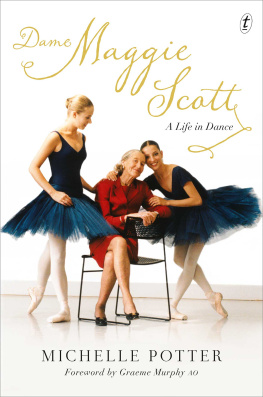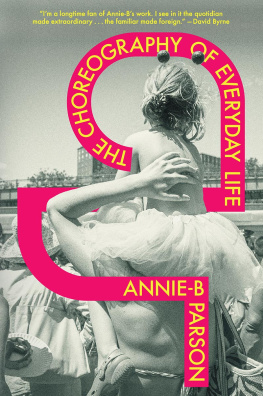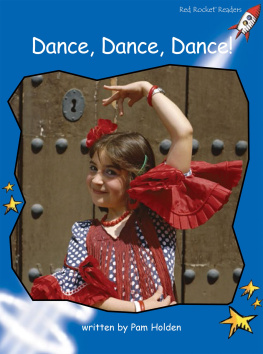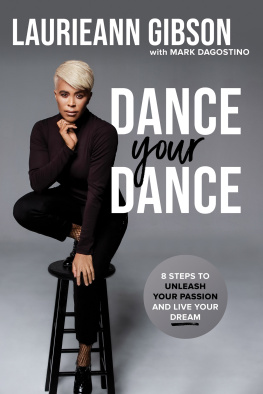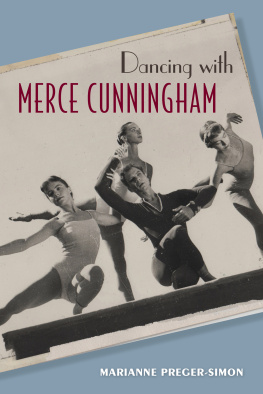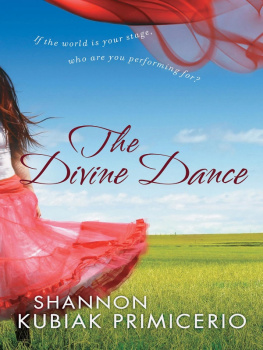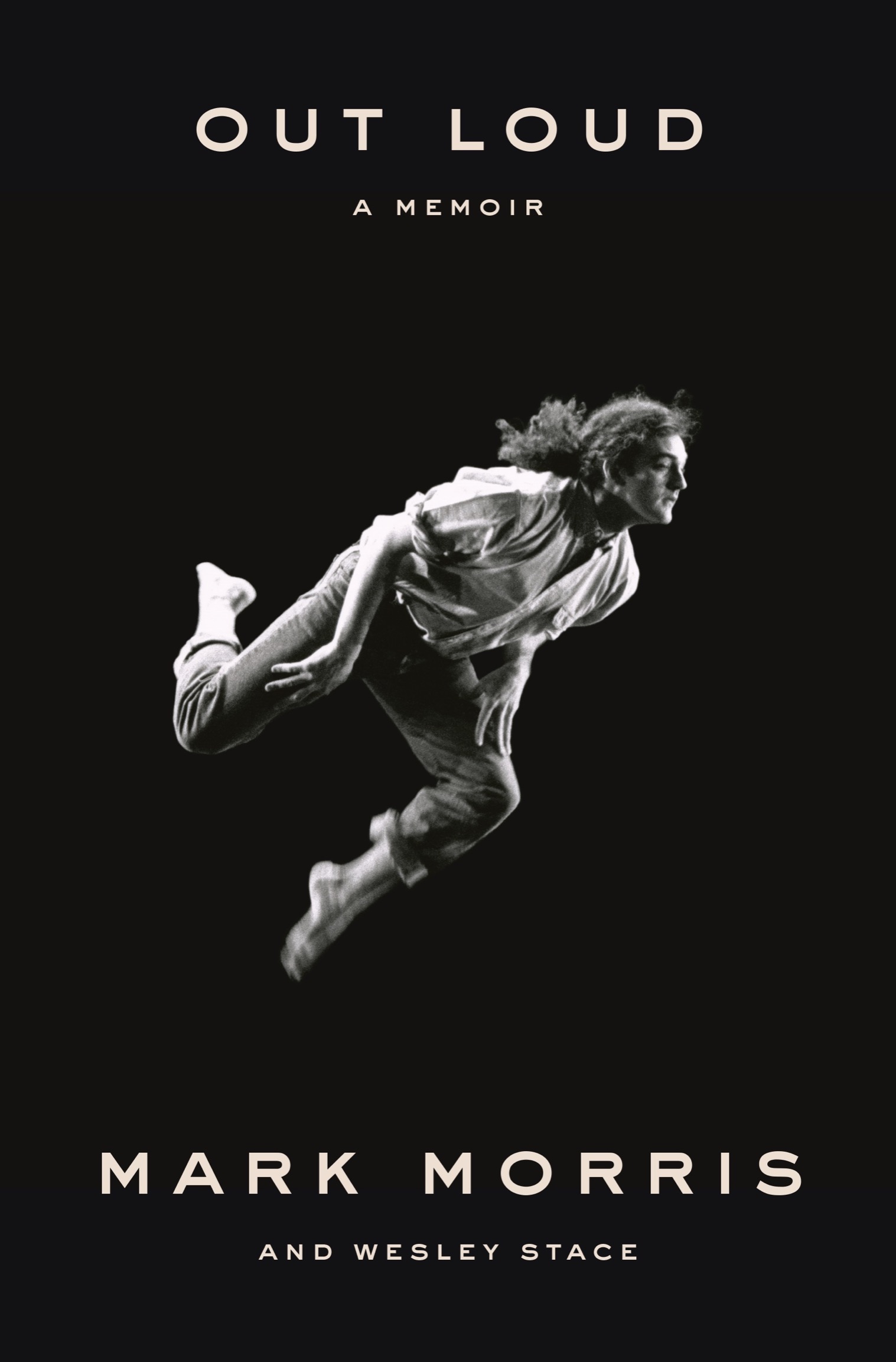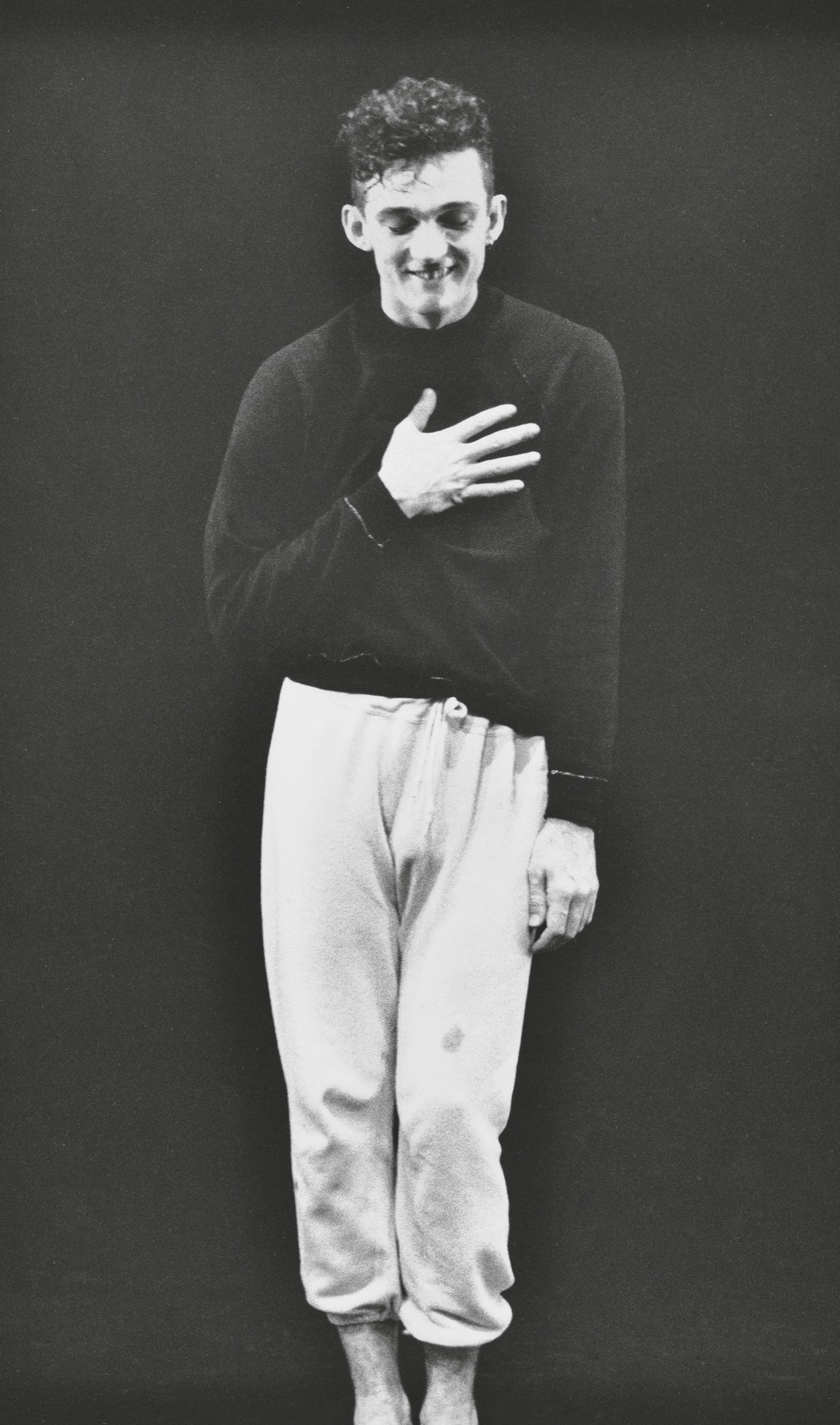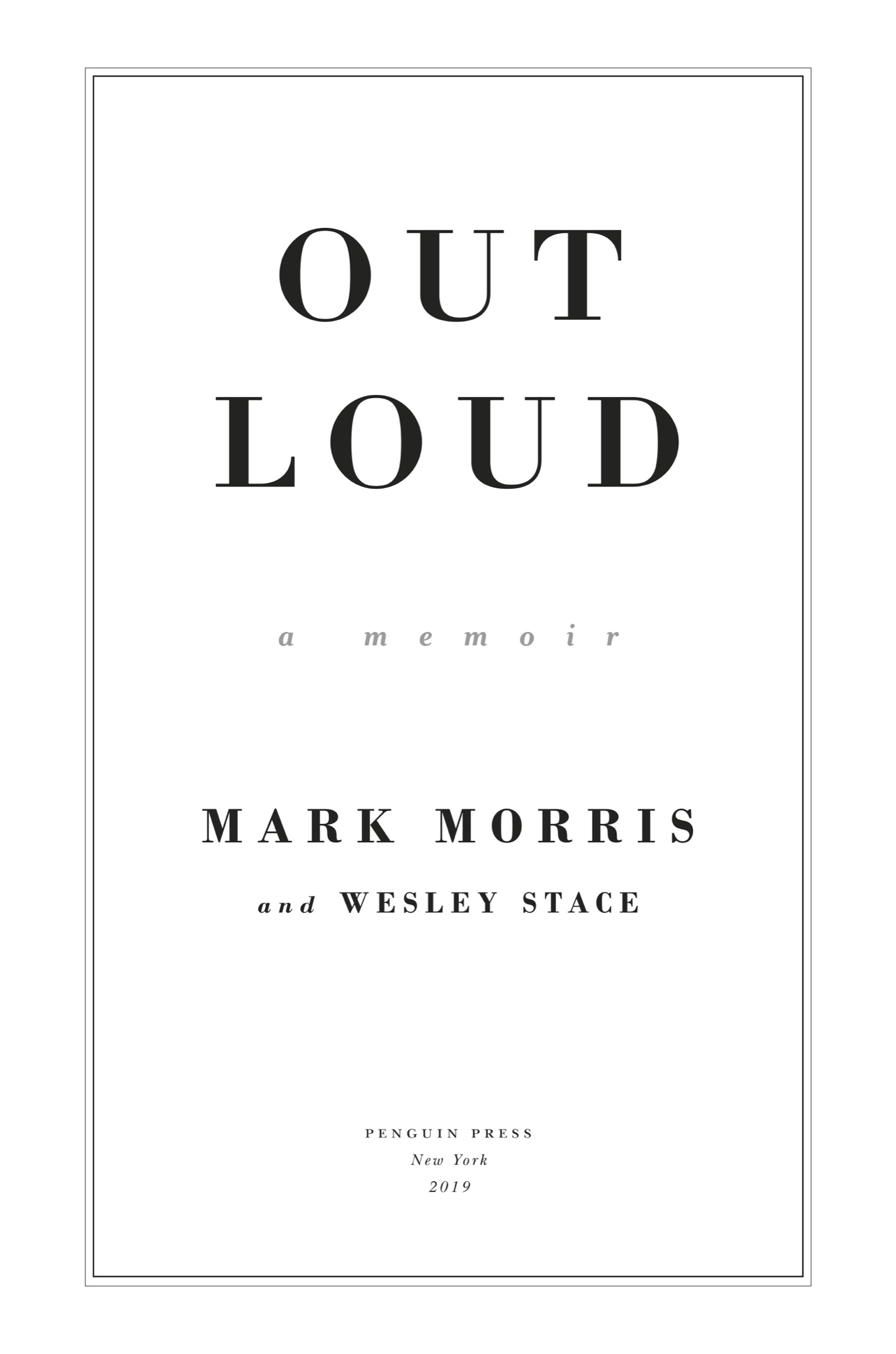PENGUIN PRESS
An imprint of Penguin Random House LLC
penguinrandomhouse.com
Copyright 2019 by Discalced, Inc.
Penguin supports copyright. Copyright fuels creativity, encourages diverse voices, promotes free speech, and creates a vibrant culture. Thank you for buying an authorized edition of this book and for complying with copyright laws by not reproducing, scanning, or distributing any part of it in any form without permission. You are supporting writers and allowing Penguin to continue to publish books for every reader.
Image credits, unless listed below, appear alongside the images:
Photograph on , Taking a Bow at Dance Theater Workshop, 1985 by Tom Brazil, courtesy of the photographer.
Photograph on , Watching from the Wings, Madrid, 2014 by Nancy Umanoff, courtesy of the photographer.
Library of Congress Cataloging-in-Publication Data
Names: Morris, Mark, 1956- author. | Stace, Wesley, author.
Title: Out loud : a memoir / Mark Morris and Wesley Stace.
Description: New York : Penguin Press, [2019] | Includes bibliographical references and index.
Identifiers: LCCN 2019019283 (print) | ISBN 9780735223073 (Hardcover) | ISBN 9780735223097 (eBook)
Subjects: LCSH: Morris, Mark, 1956- | Choreographers--United States--Biography. | Ballet dancers--United States--Biography. | Mark Morris Dance Group.
Classification: LCC GV1785.M635 A3 2019 (print) | LCC GV1785.M635 (ebook) | DDC 792.802/8092 [B]--dc23
LC record available at https://lccn.loc.gov/2019019283
LC ebook record available at https://lccn.loc.gov/2019019283
Penguin is committed to publishing works of quality and integrity. In that spirit, we are proud to offer this book to our readers; however, the story, the experiences, and the words are the authors alone.
Cover design: Darren Haggar
Cover photograph: Beatriz Schiller 2019
Version_2
I dedicate this book with love and gratitude to Nancy for every bit of success. My unusual vocation, the company, our school, a Dance Center, and any hint of humanity I may possess I owe to her.
Her limitless kindness, trust, and generosity benefit us all.
No bow I could take would be deep enough to honor her adequately.
CONTENTS
Prologue
There is an obsession with process that I dont share. I want the surprise: I dont need to know how the magic trick works. If the audience has already watched the magician practice sawing a woman in half, its not going to be overly impressed when he does it again during the show, unless hes suddenly doing it lengthwise.
I am not interested in works in progress. Finish it, then Ill buy a ticket. Art isnt reality TV or a directors cut with three unexpurgated hours of bloopers. I dont want to catch people with their pants down. I dont want to know the awful secrets that happened backstage. I only want to see, in conjuring terms, the prestige.
T HIS IS HOW IT WORKS . You decide what you want to do: play the piano or sing. You practice alone, learn how to do it well alone, get good at it. Then you play for an audience: Heres something I prepared earlier. And you do it as well as you can.
And then its over.
When the curtain goes up, the audience sees something its never seen before and, particularly with dance, something itll never see again. I dont show a piece until Im ready to pinch it off, and sometimes that isnt until the very last minute.
I was once choreographing for a ballet company in a many-windowed studio. A window to the outside world is one thing, but a window through which people can observe is another. You feel like youre in some kind of a Louis Quatorze petting zoo, an attraction for the aristocracyboard members accustomed to the access, the kind of people who call the dancers boys and girls. Its creepy. Im notorious for covering these windows, because if someones watching, its automatically a performance it shouldnt have to bethe dancers need to feel safe to exploreand rehearsals can be boring, a dull process about which none of the participants, least of all me, should feel self-conscious. I may work on eight bars for a week or eighteen bars for five minutes. I might keep some of it or none of it. I might joke around, and somehow only that bit stays, purely because it was funny. These arent interesting secrets.
My rehearsals are closed.
T HIS IS A MEMOIR , not a cookbookI cant tell you the recipe exactlybut heres what I can tell you about my process.
I always start with a piece of music that I love, or at least admire, and can bear to listen to hundreds of times. Its very rare that this is music that was specifically composed to be danced toa lot of that isnt very interestingand I gravitate toward music on a scale I can take on tour, because I wont use recorded music. I work with living musicians. I listen to the music and study the score in depth so that when rehearsals begin, I arrive with some ideas, perhaps a key movement (that Ill then develop as I make up the dance) or a rule or constraint that Ill impose upon my choreography, something to kick-start me. But I never work alone in the studio. I make up everything in the room with and on the dancers.
My dances are worked out in advance, practiced relentlessly. They aspire to the highest level of accomplishment and excellence. I believe that each piece should have a structure answerable only to itself; the language I create for a particular dance has to resolve itself in that dance. Its a complete thought. There will be no sequel.
A question I am often asked is Do you choreograph every move or is everything entirely improvised? as though those are the only two possibilities and mutually exclusive. Well, its neither one nor the otherthough more the formerbut the point is that everybody is improvising all the time theyre performing, no matter what theyre playing, however fiendish the Bach toccata, and regardless of the fact that they know exactly what theyre doing. In rehearsal, I might say, I want this to look like the ocean: Go! or Something that reminds me of skeletons! Its not only right, left, right, kick, though theres plenty of that. Its not only dictatorial; its participatory (and Im the boss). Improvisation doesnt equal freedom; it usually equals chaos. If improvisation is so liberating, why does it always look exactly the same? As indistinct as the rinse water for an artists brush.
And dont forget the contribution of the designersdcor, lighting, costumes. I give them the music Im planning to confront; they listen to it and come up with their own ideas. The final say may be mine, but Im no lighting designer. I work with people I trust.
The dancers contribute by dancing, not by improvising. Very few actors are playwrights; very few opera singers are composers. Theyre different jobs. Though dancing and choreography are related, relatively few dancers are interested in the composition of a dance. I found myself interested from the very beginning. And the dancers I choose for my company have to be interested too. Not just so theyll hear music the same way I do; they have to know everything thats going on, what everybody else is doing, so they grasp the architecture of the dance, in the same way that I wish each player in a string quartet had all four parts in front of him.



